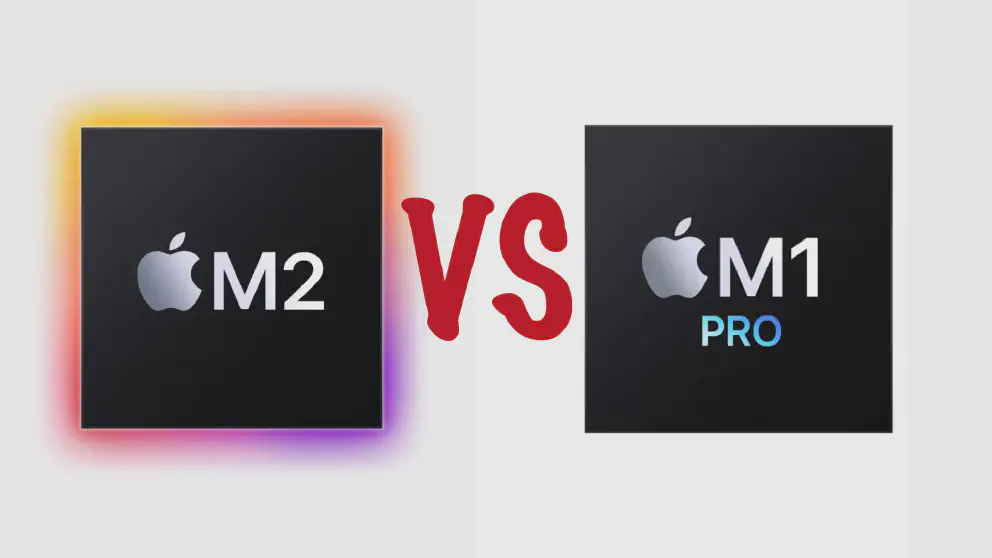When Apple unveiled a completely redesigned MacBook Pro in 2022, it also unveiled a brand new SOC dubbed the M1 Pro and M1 Max. There were a few differences between those two “professional” SOC, but they are the most powerful laptop chip that Apple had at the time.
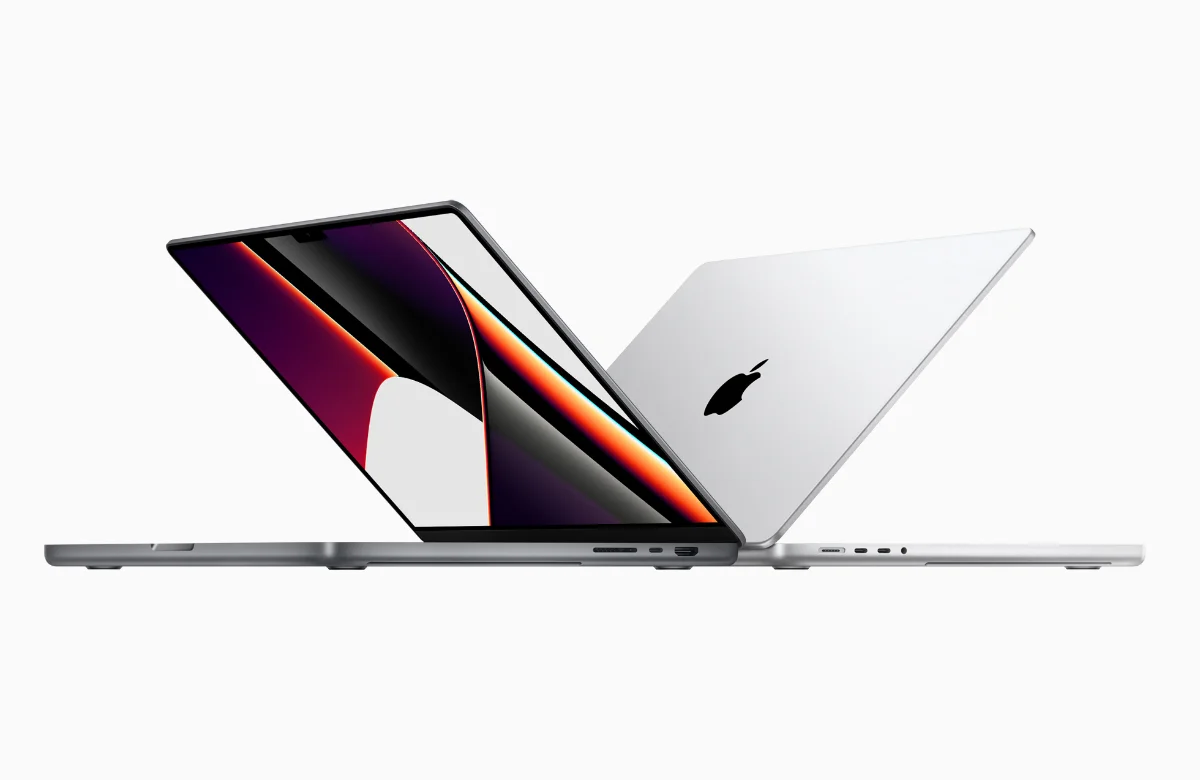
Apple recently unveiled the 2nd generation Apple Silicon creatively named M2 together with a redesigned MacBook Air and a repurposed MacBook Pro. A lot of the features that were first introduced in the M1 Pro SOC made its way in the M2 SOC. With improvements and features made in the M2, how close is the gap between a M2 SOC and a M1 Pro SOC? Can the M2 outperform the M1 Pro?
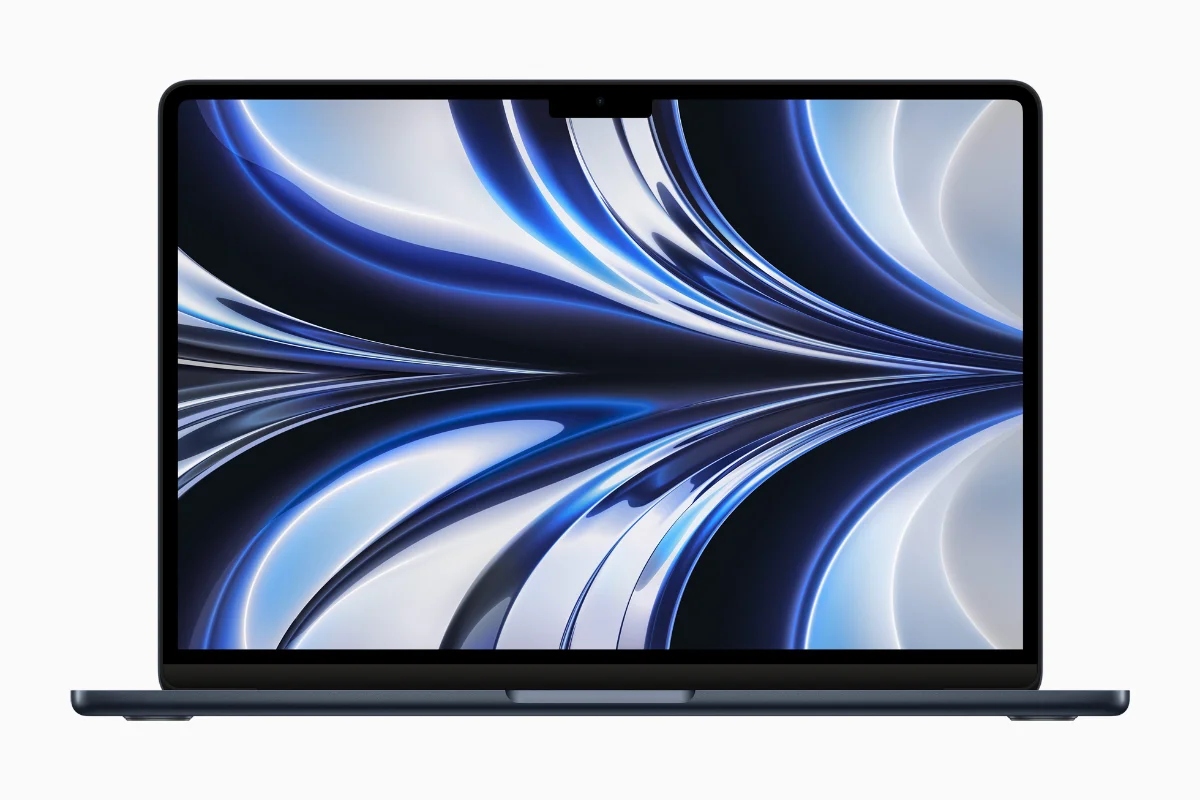
M2
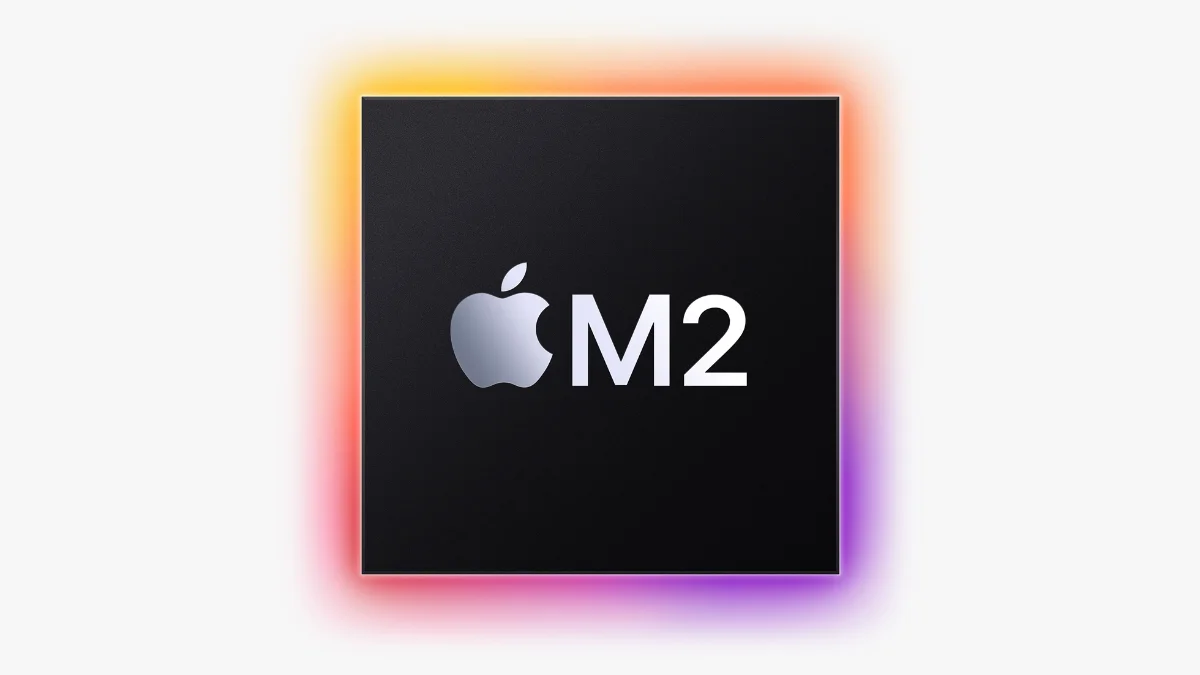
More detailed info about the M2 can be found here
The M2 represents the first of the 2nd generation Apple Silicon. With lessons learned from the 1st generation unveiling, this M2 SOC packs quite an energy efficient punch. Based on the designs of the A15 chips that are in the iPhone 13, the M2 is built on the 2nd generation 5nm manufacturing process. Like all SOCs, the M2 features a lot of cores that do specialized stuff. 8 cores are for general computing, with 4 of them focus on being efficient and the other 4 are performance. The GPU has been upgraded to 10 cores instead of 8. The Neural Engine is still 16 cores like before but around 33% faster. And for the first time in “consumer” Apple Silicon, a Media engine is present which helps with ProRes videos to encode and decode work.
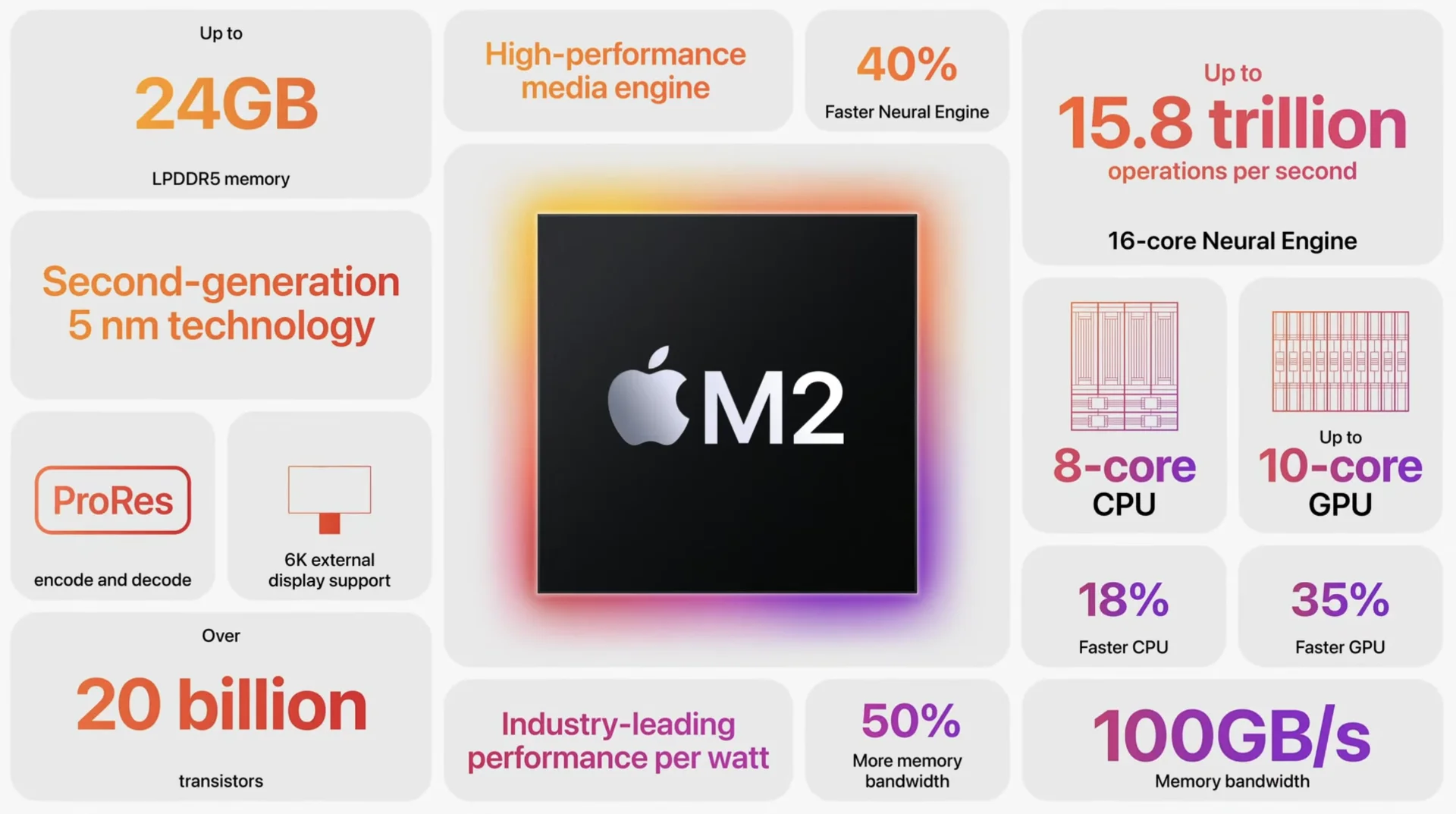
Overall, for a SOC with a target TDP of around 10 to 15 watts, the M2 can do a lot of things for a lot less. On paper, the improvements of the M2 are evolutionary. This is somewhat true, but Apple goals are not performance improvement for the sake of performance improvement. Apple first set a energy budget, and built a chip around it. A 20% to 30% claimed performance increase in what is essentially the same chip, is quite a performance boost.
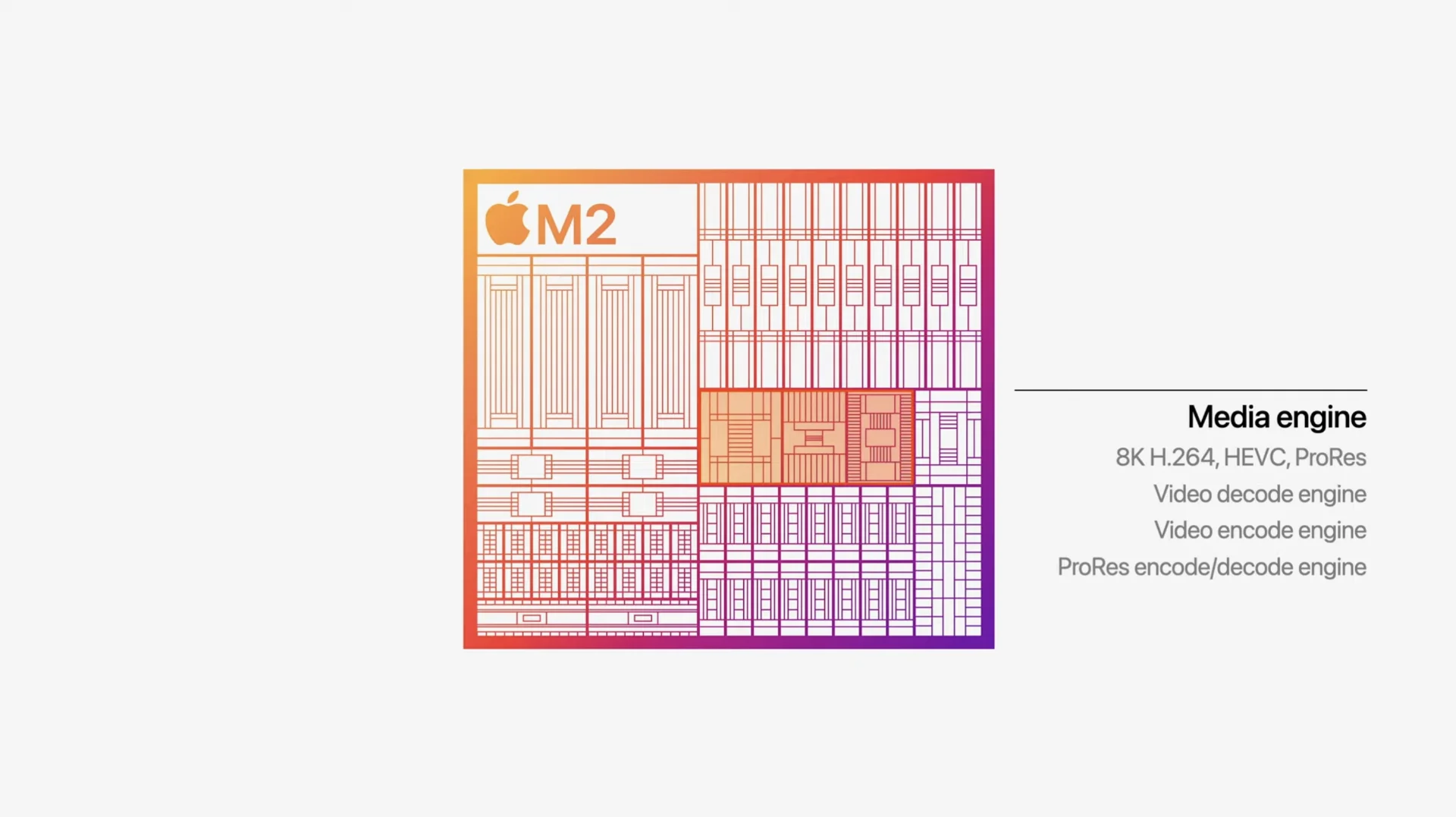
M1 Pro
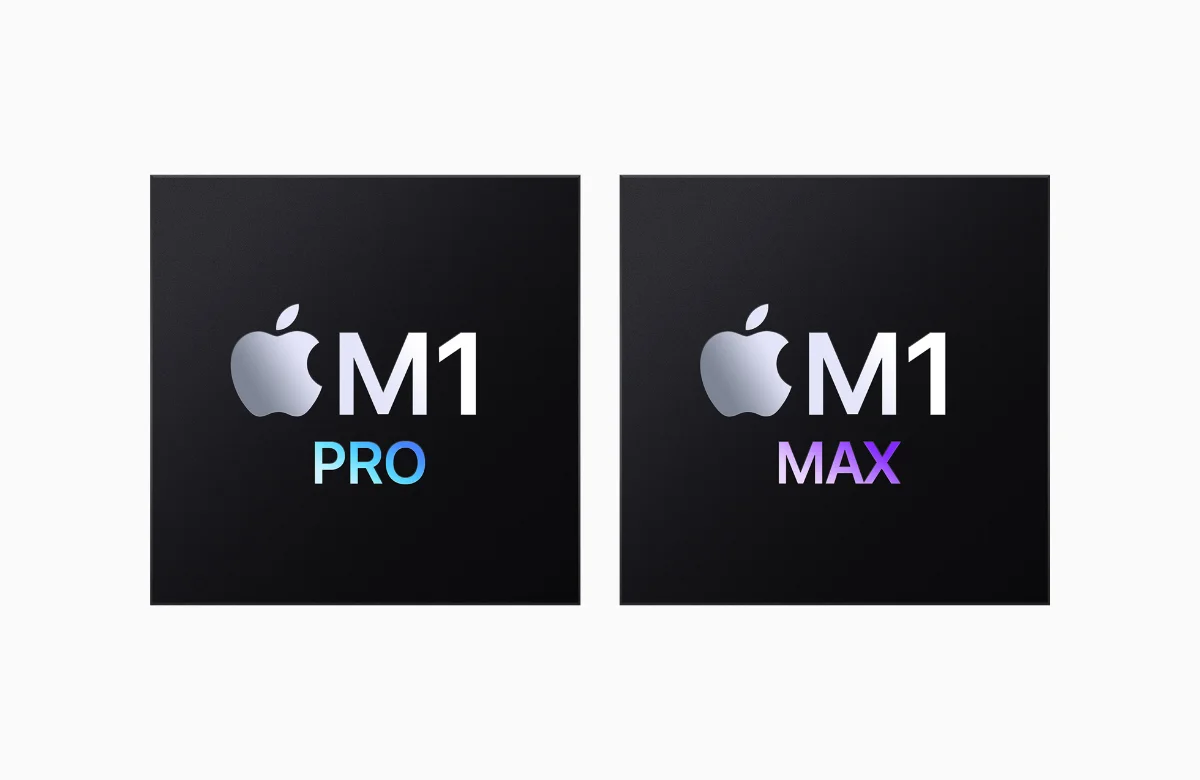
More detailed info about the M1 Pro and Max can be found here
The M1 Pro is the first of the “professional” Apple Silicon. First introduced together with the M1 Max, the M1 Pro is Apple’s solution to create the best laptop for under $2,000. Although the M1 Max and the M1 Pro are literally cut from the same cloth, the M1 Pro provides Apple the high yield option for manufacturing. At the peak, the M1 Max can be configured for 10-core cpu, 32 core GPU, 16-core neural engine and dual media engine. The M1 Pro provides Apple means to cut down cost by improving yield by reusing parts of the M1 Max. The result: a chip that is built from M1 Max with half the GPU core count more CPU and GPU cores can be switched off for binning purposes.

While M1 Max gets all the attention because it sits at the top shelf, the M1 Pro is no slouch. With a media engine, a 16-core GPU, and basically the same CPU layout as the M1 Max, the M1 Pro can do most of the M1 Max can do except for the most intense of graphic problems.

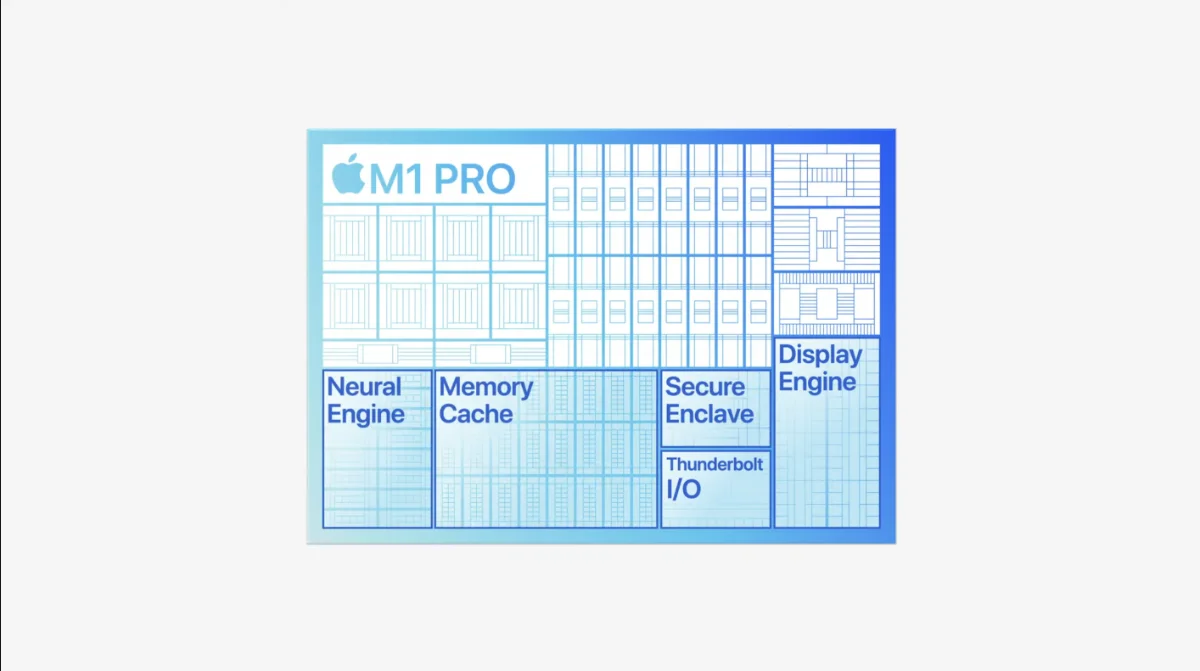
Performance
Now here comes the question: with increase in GPU core count and overall optimization on the M2, is the M1 Pro in danger of being irrelevant? In general, the answer is no. M1 Pro multi core performance is still much better than the M2, although the gap is closing. Graphic performance is still better on the M1 Pro. The media engine in the M2 helps with video export and encoding, but it’s a watered down version of the M1 Pro.
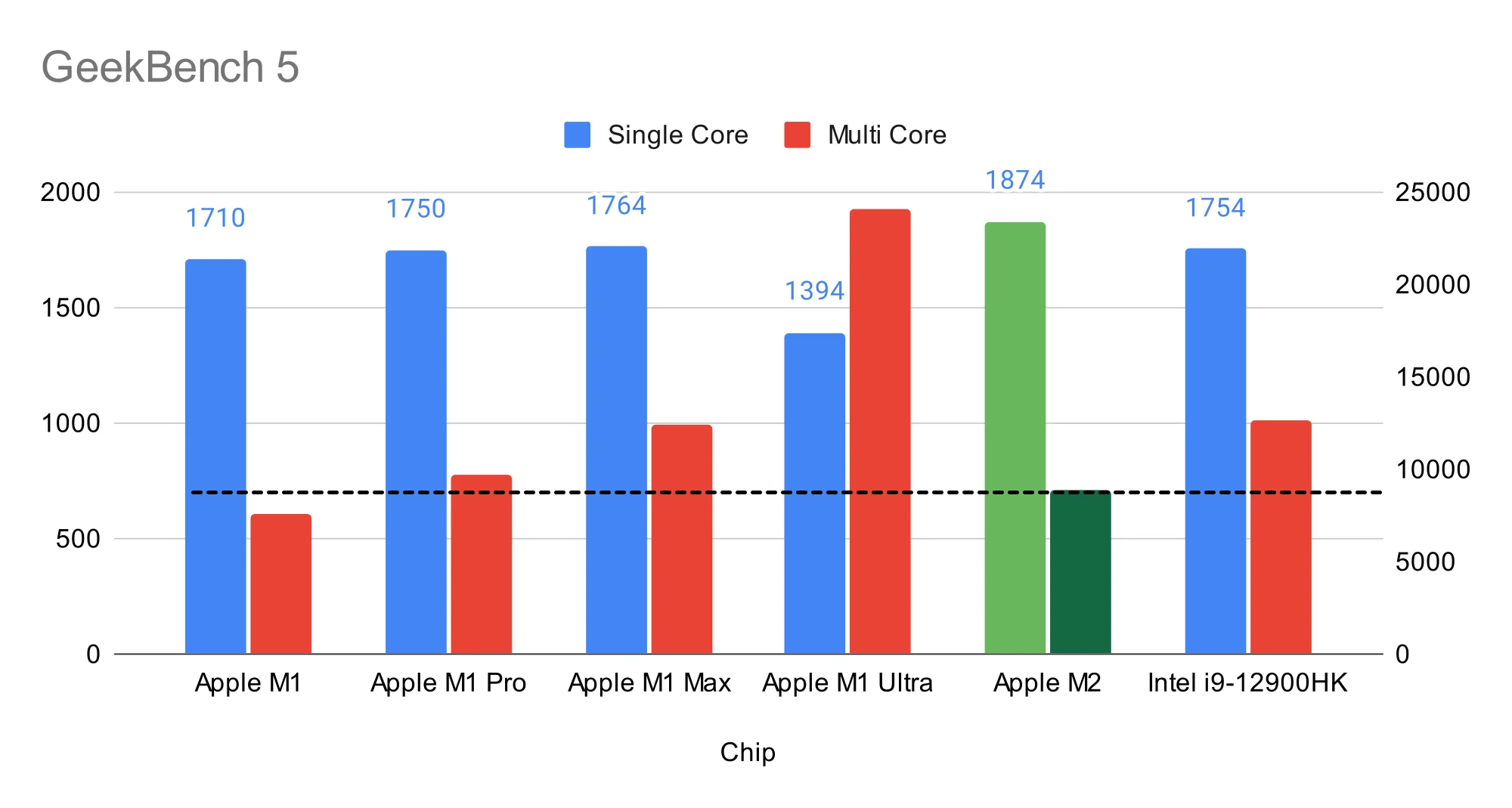
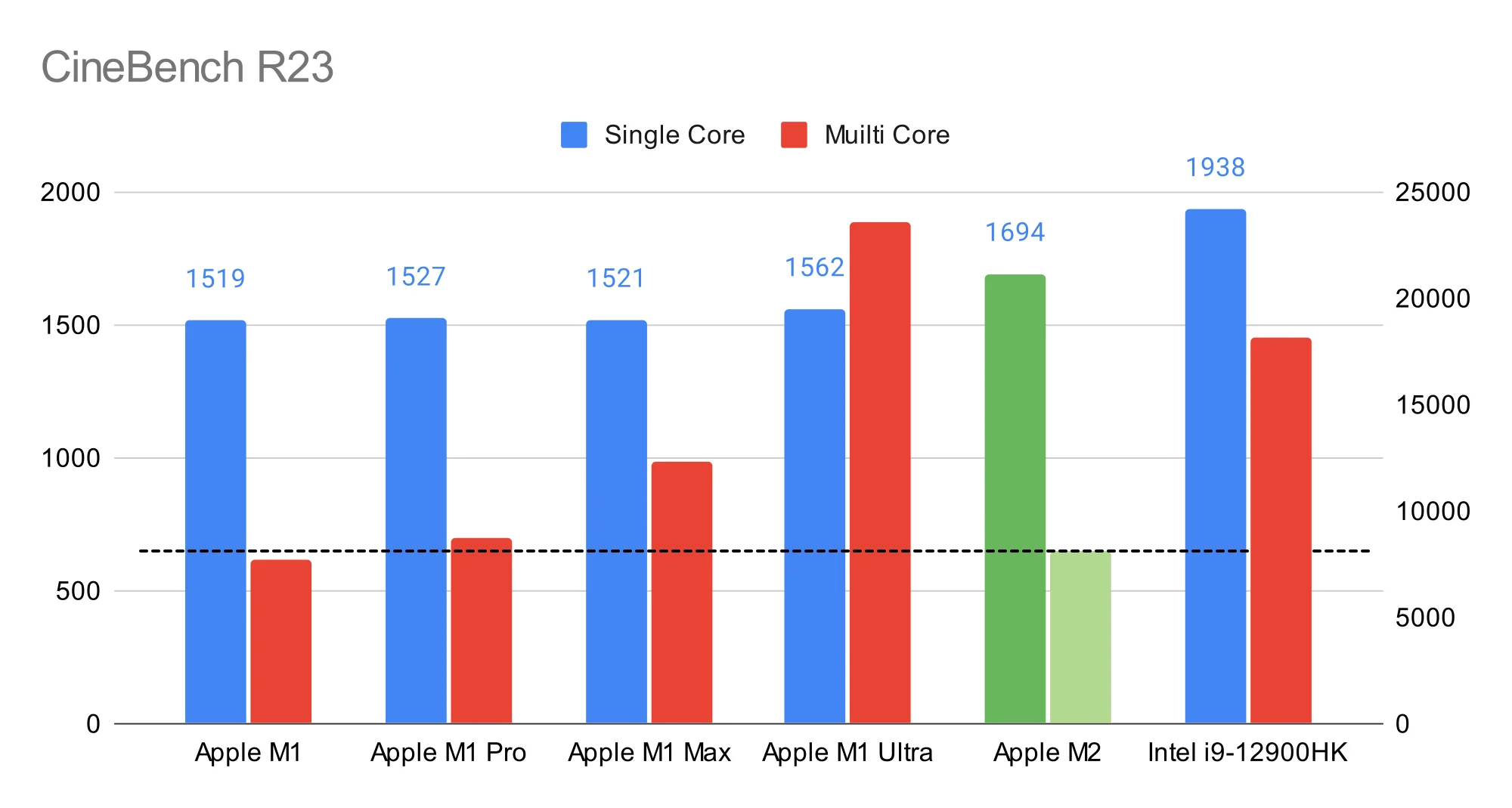
The M2 scored 1874 (single core) and 8854 (multi-core) points in GeekBench 5 while the base 8 CPU core M1 Pro scored 1750 and 9731 points. On CineBench, where things are more intensive, the M2 scored 1694 and 8174 points while the M1 Pro scored 1527 and 8773 points. Yes, a fully specs M2 follows very closely with the base M1 Pro and single core performance is where the M2 shows marked improvement.

However, discounting raw benchmark, I/O on the M1 Pro is far much better. The M2 is available on the redesigned MacBook Air and the tried and tested MacBook Pro chassis. On those configurations you can support only 1 external 6K monitor. You might be able to support an additional 4K TV when the new Mac Mini comes out. But the M1 Pro, which is on the redesigned MacBook Pro chassis, you can support two 6K monitors and another 4K TV. And the media engine on the M2 is not as powerful as the M1 Pro which I suspect is taken from the A15 chip on the iPhone 13 Pro.
While it is still to see marked improvement in the M2 in single core performance, where some tasks (like the view window in Blender) will improve, don’t throw out your new MacBook Pro yet. It still has the edge and I predict the M1 Pro MacBook Pro will still be useful for years to come.
Conclusion
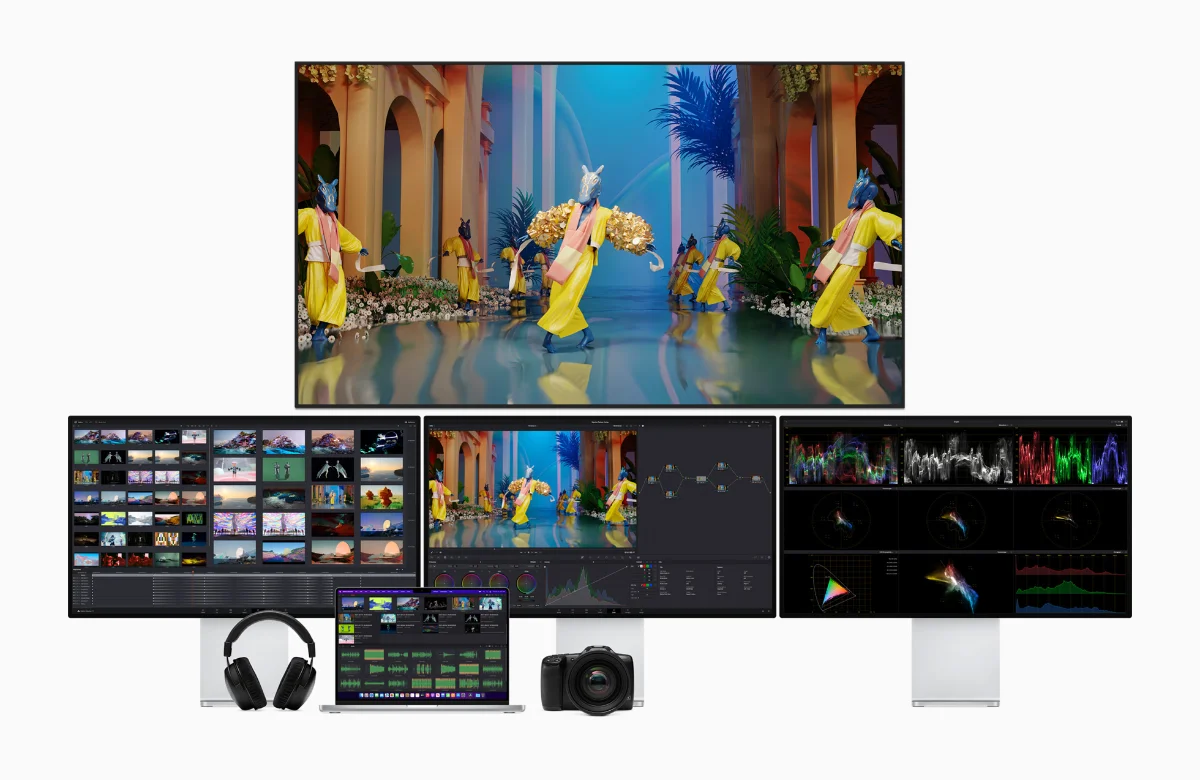
While the base M1 Pro still has the edge against the M2, it is quite surprising to see how close the performance gap is between those two SOC. Quite impressive for what is considered an “evolutionary” upgrade. But do bear in mind that both the consumer and professional Apple Silicon have different goals in mind: one is focused more on efficiency and the other is focused on I/O and performance.
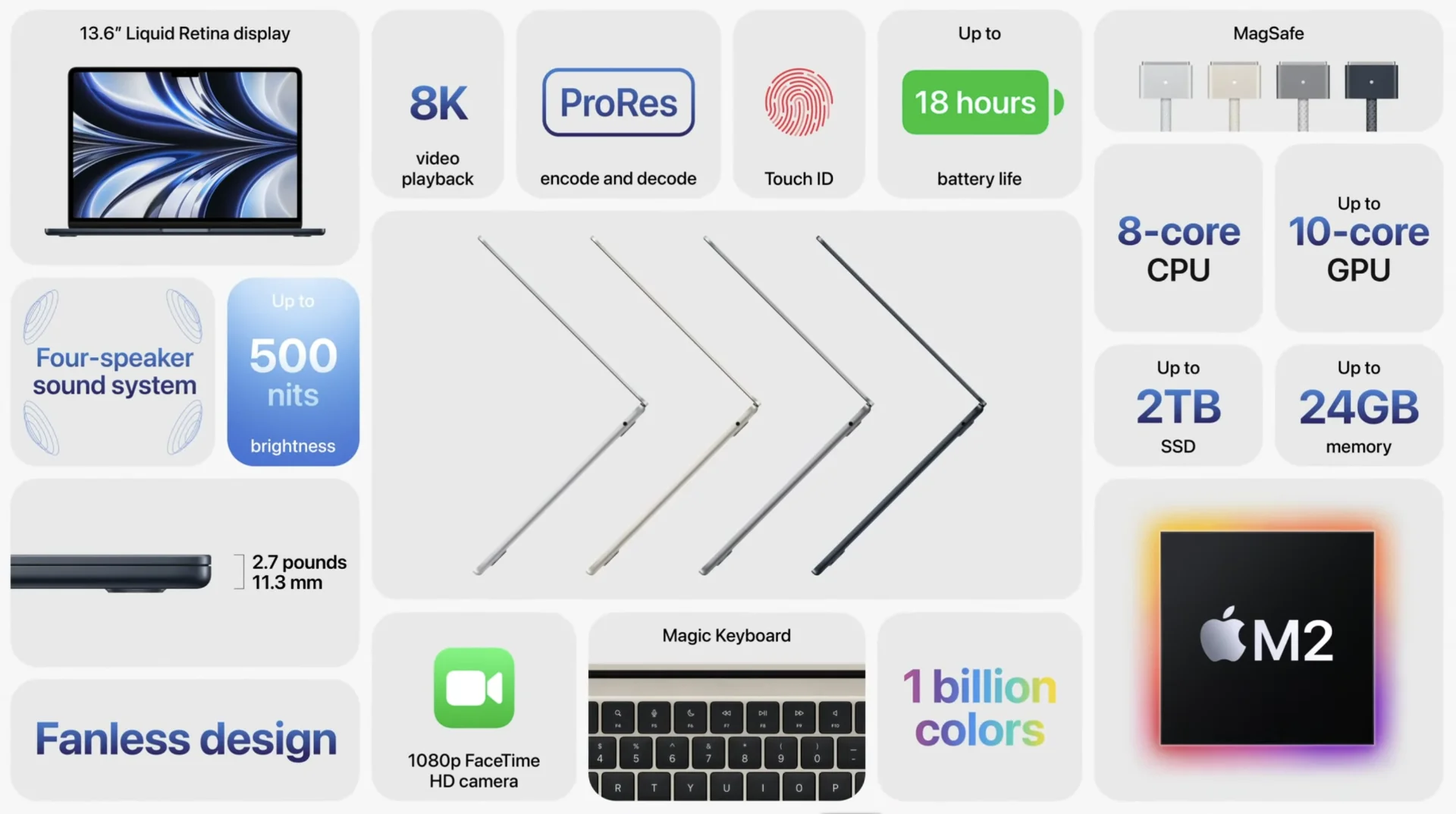
- iterate the point: different SOC suited for different goals,
- however, M2 still packs a punch, and such optimization will translate well into M2 Pro / Max
- it depends on the workflow
- people still running on Mac Pro that was introduced in the 2019, because the Mac Pro fits perfectly in their workflow
- both are amazing SOCs in the their own right
Plug
Support this free website by visiting my Amazon affiliate links. Any purchase you make will give me a cut without any extra cost to you
- Mac Mini M1 - Amazon USA / Amazon UK
- iMac 24" M1 - Amazon USA / Amazon UK
- Mac Studio - Amazon USA
- MacBook Air M1 - Amazon USA / Amazon UK
- MacBook Pro 13" M1 - Amazon USA / Amazon UK
- MacBook Pro 14" M1 Pro / M1 Max - Amazon USA / Amazon UK
- MacBook Pro 16" M1 Pro / M1 Max - Amazon USA / Amazon UK
- Accessories:-
- Wireless earphones / headphones:-
- AirPods - Amazon USA / Amazon UK
- AirPods Pro - Amazon USA / Amazon UK
- AirPods Max - Amazon USA / Amazon UK
- Buyer's Guide:-
